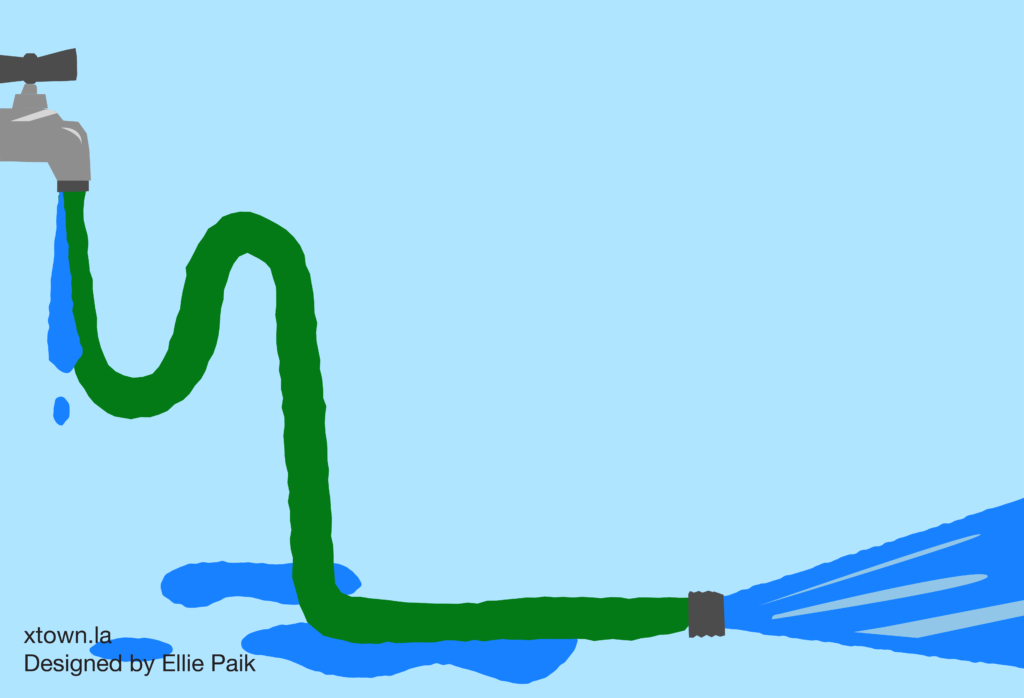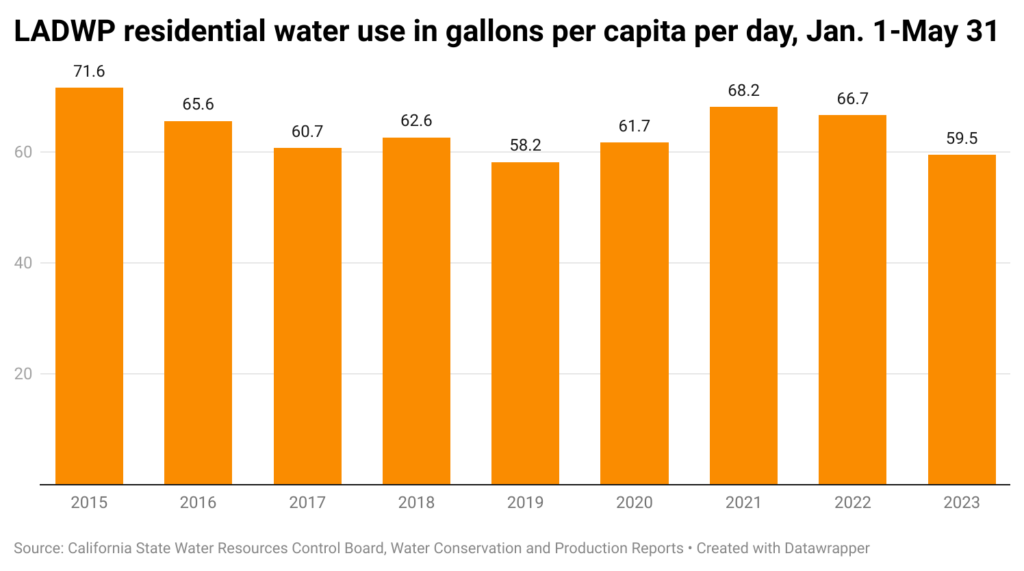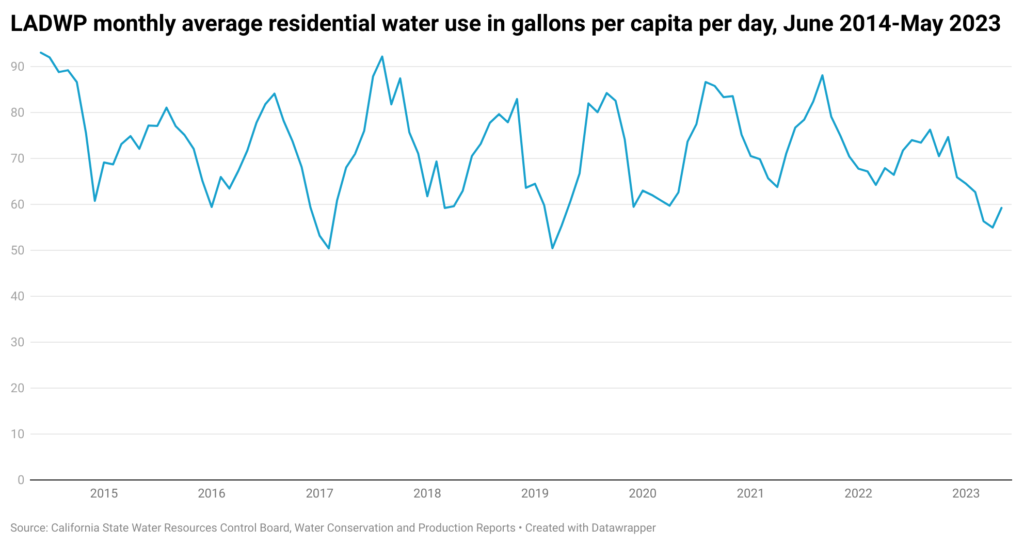Residential water use in Los Angeles declines after winter rains

Los Angeles saw its eighth wettest season in 145 years last winter. The torrential downpours did more than fill aquifers, shrink water waste complaints and ease drought concerns—they also led to the biggest cutbacks in regional residential water use in four years.
The average customer of the Los Angeles Department of Water and Power used 59.5 gallons per day from Jan. 1–May 31, according to publicly available water use and conservation data from the California State Water Resources Control Board. This marked an 11% drop from the same period last year, and was the lowest recorded figure since 2019 (the 2023 figures are preliminary and subject to a slight revision).

The decline came after some notable gains had already been achieved. The LADWP’s 4 million customers in 2022 had an average per capita daily residential use of 70 gallons, down 6% from the 2021 count of 74 gallons.
“Our customers are committed to preserving water, saving water, even beyond the immediate crisis of last year,” said Terrence McCarthy, manager of water resources policy at the LADWP. “A lot of them have probably changed certain habits they have that maybe they identified as wasteful water use.”
[Get crime, housing and other stats about where you live with the Crosstown Neighborhood Newsletter]
The downturn comes amid heightened efforts to respond to a decade-long drought. In July 2021, Gov. Gavin Newsom asked Californians to reduce their residential water use by 15%. The following June, the LADWP put in place the strictest conservation orders Los Angeles had ever seen, restricting outdoor watering to two days a week and prohibiting it between 9 a.m. and 4 p.m.
Water use across the region began to trickle down, with daily residential use for LADWP customers in September 2022 dropping more than 13% from the same month the previous year.
Water use in the region follows a predictable pattern, with low levels during the winter, and peaks during the hot summer months, the latter propelled by people trying to keep their lawn green.

Public messaging
Another tool for the DWP was ramping up a public relations effort. McCarthy said the “Save the Drop” campaign, originally launched in 2015, was revived in 2021 as the drought worsened.
“One of the factors was the public messaging about the drought and people’s response to that,” McCarthy said.
The patterns in Los Angeles reflect changes seen across California. Newsom this March eased statewide drought restrictions following a series of powerful storms. However, a July Los Angeles Times article reported that some goals were not met—statewide water savings were about 7%, or only about half of the 15% Newsom initially wanted.
Los Angeles this winter was inundated by storms. From January through March, the National Weather Service recorded 22.61 inches of precipitation at its measuring location on USC’s University Park Campus. That’s 14 times the total in the same period in 2021.
Public officials have stressed that the drought is not over, but gains and rains have produced some rules changes. May Karen Bass, acting on recommendations from the LADWP, loosened restrictions July 27, allowing outdoor watering three days a week. This came following Newsom’s move and after the Metropolitan Water District of Southern California—which supplies much of the water LADWP manages and distributes—lifted the water shortage emergency order it issued last year.
The LADWP continues to provide a number of conservation incentives, McCarthy said. Those include offering free water-efficient showerheads and giving customers a $500 rebate to install a new water-saving washing machine in their home.
How we did it: We examined publicly available water conservation and production data from the California State Water Resources Control Board from June 2014–May 2023. Learn more about our data here.
Want to know how your neighborhood fares? Or simply interested in our data? Email us at askus@xtown.la.
Correction: An earlier version of this article stated that watering restrictions had been eased on July 31 by LADWP. Restrictions had been relaxed on July 27 by Mayor Bass.






